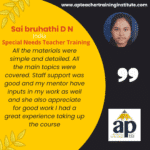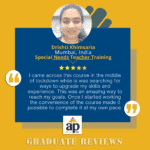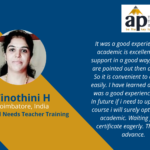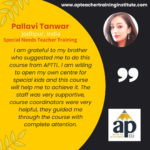Effective Teaching Techniques for Students with Special Educational Needs (SEN)
Creating inclusive learning settings where every student may flourish depends much on the educators. Working with students who have Special Educational Needs calls for flexible, individualized, and encouraging approaches. These techniques are meant to enable teachers improve involvement and encourage academic and personal development among students with special needs.
Table of Contents
- Personalized Learning Plans
- Multisensory Instruction
- Task Simplification
- Assistive Technology
- Positive and Inclusive Classrooms
- Flexible Grouping
- Structure and Routine
- Consistent Feedback
- Collaborative Support from Specialists
- Promoting Social Skills
Personalized Learning Plans
Personalized instruction really helps students with special educational needs. Creating customized learning plans lets teachers fit courses to every student’s speed, aptitude, and strengths and challenges. Effective handling of several cognitive and emotional requirements depends on this strategy.
Multisensory Instruction
Including kinesthetic, aural, and visual techniques into classroom instruction will help to greatly increase understanding and memory. For inclusive participation and improved learning results, for instance, matching verbal instructions with graphics or using tactile materials will engage pupils.
Task Simplification
For SEN children, breaking down difficult work into smaller, doable parts enables them to grasp and finish projects. Providing detailed instructions together with visual or vocal signals helps to lower cognitive strain and increase student confidence.
Assistive Technology
Combining tools such interactive learning systems, audiobooks, and speech-to—text software helps to make courses more easily available. Many times, these materials are highlighted in special education needs online courses and assist close knowledge gaps.
Positive and Inclusive Classrooms
Key is to provide a motivating classroom environment. Honor little achievements and support group projects to strengthen a community. Inclusive policies provide a safe environment where kids feel driven and valued.
Flexible Grouping
Sort students into pairs, small teams, or whole-class debates to rotate group structures. This approach supports several learning styles, enhances peer relationships, and encourages social interaction.
Structure and Routine
Sort students into pairs, small teams, or whole-class debates to rotate group structures. This approach supports several learning styles, enhances peer relationships, and encourages social interaction.
Consistent Feedback
Give often helpful and constructive comments. To raise self-esteem, see effort as much as accomplishment. Timely reinforcement directs development and motivates good behavior over time.
Collaborative Support from Specialists
Working with experts in special educational needs training—therapists, counselors, and special educators—ensures a comprehensive support system. For every student, this team approach improves their intervention plans.
Promoting Social Skills
For many students with disabilities, social connection is an absolutely vital area of growth. In regular courses, include group projects, role-plays, and games fostering in communication, empathy, and teamwork.
Conclusion
Equipped with appropriate teaching strategies, teachers can significantly influence the life of pupils with Special Educational Needs. Applying these techniques and improving your skills via a SEN Certificate or a special educational needs degree will help you to significantly assist students and support a more inclusive educational system.
Whether your goal is to specialize further or change your career path, enrolling in special education needs online courses can equip you with tools and strategies to change your classroom practice and benefit every student.
FAQs
Q1: What is the benefit of a SEN Certificate?
By helping a teacher to grasp and satisfy the requirements of students with disabilities or learning difficulties, a SEN Certificate improves teaching effectiveness and career opportunities.
Q2: Can I teach SEN students without a degree?
Although not usually required, a special educational needs degree or appropriate qualification greatly enhances your reputation and equipability to assist SEN students.
Q3: Are there affordable special educational needs online courses?
Indeed, several platforms provide easily available special educational needs online courses meant for present teachers and future SEN experts.














